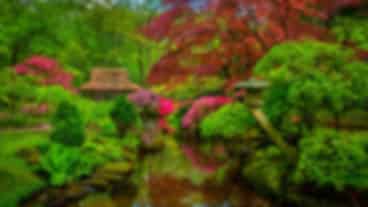Shrines vs Temples in Japan
Author
Arya Singh
Updated Date
April 28, 2025
Read
5 minutes

Japan is a country that seamlessly blends tradition and innovation, excelling in both. While cyberspace keeps you updated about innovative Japan, some aspects cannot be completely covered in the digital space but rather by your own eyes. Traditions can only be seen and experienced through temples, shrines, festivals, and culture. Shrines and temples in the Japan tour package are best experienced on-site, where history, spirituality, and culture come together in a way no digital screen can replicate.
Shrines: Japan’s Spiritual Gateway

Shrines are built to serve the Shinto religious tradition that revolves around worshipping Kami, spirits believed to inhabit natural elements, ancient trees, and ancestral forces. Shinto Shrines are known as Jinja, a place where people go to honor Kami by offering their prayers and performing rituals. They are generally built as compact structures and typically are devoid of any graveyards within their grounds. Shinto Shrines can be found throughout urban and rural Japan especially around nature and can be explored during your Japan trip.
Spotting a Shrine: What to Look For
Shinto shrines are recognised by the presence of Torii Gate, a mighty and typically red entrance with crossbars making it a gateway to the sacred space. The devotees here prove their faith in Kami. There are two spaces inside the shrines: Honden and Hayden. Honden is the main building, the inner sanctuary where Kami is believed to dwell while Hayden is the offering hall where devotees can pray and worship. It is also characterised by a Tezumisha which is a purification basin used to cleanse your hands and mouth, a key act in Shinto practice.
Shrine Etiquette
Upon arriving at the shrine, visitors are expected to cleanse themselves at the purification basin before entering the main hall. At the offering box in front of the main hall, the standard custom is to bow and clap twice, make a wish or prayer, and bow one more time. After taking a bow, a large bell is rang by the devotee that is believed to to summon the attention of the kami to hear your prayers.
Famous Shrines You Shouldn’t Miss
Fushimi Inari Taisha is one of the most visually stunning shrines in Japan with its mesmerising path of thousands of vermilion torii gates that line the trail up Mount Inari. Ise Grand Shrine is dedicated to Amaterasu and is made up of two complexes – Naiku and Geku which are set in a serene forest of ancient trees. A Shrine honoring Emperor Meiji and Empress Shoken is the Meiji Jingu, surrounded by a vast man-made forest of over 100,000 trees. Lastly, Itsukushima Shrine is globally renowned for its “floating” torii gate ( quite literally) and is a UNESCO World Heritage Site dedicated to the Shinto deities of the sea and storms.
Checkout: Japan Rail Pass
Temples: A Journey into Buddhist Serenity

Japanese temples are built to serve the Buddhist religious tradition by honoring the Buddha and various Bodhisattvas. Emerging from Buddhist philosophies which originally arrived in Japan from the Asian mainland around the 6th century, these temples epitomise tranquility, reflection, and the pursuit of inner peace. What characterises a temple is the kairo, hondo, and stupas or pagodas that symbolise sacred Buddhist relics. Japan houses over 75,000 temples with some hosting festivals, calligraphy workshops, meditation classes, and seasonal events like hanami (cherry blossom viewing) or autumn leaf illumination to bless your eyesight.
Spotting a Temple
Buddhist temples are distinguished by their sanmon gates which are large entrances acting as an entry point towards the spiritual grounds. Temples in Japan are also characterised by multi-tiered pagodas and a prominent Buddha statue visible either inside or outside the main hall. Few temples may feature graveyards or memorial areas in the space along with scent incense burners where worshippers light sticks of incense before prayer. Architecturally, temples tend to be more elaborately constructed than shrines with artistic carvings, murals, and serene gardens.
Temple Traditions
Shoes are removed before entering the worship hall and stepping on the tatami mats inside. Some practices counted as ordinary include lighting an incense at the main entrance and bowing in silence before entering the sacred hall is a practice that has been followed for generations as a way to offer respect, purification, and a spiritual connection to the Buddha. A donation, or osaisen, is customarily placed in the offering box as a sign of respect and gratitude.
Checkout: Can Tourists Drive in Japan? Rules and Must-Know Tips
Famous Temples to Visit
Kinkaku-ji in Kyoto is a three-story Zen Buddhist Temple with the top two floors adorned with gold leaf because even temples like to dress for the occasion. Daibutsu (Great Buddha) a colossal bronze statue that measures up to 15 metres rests in the Todaiji Temple in Nara. The Senso-ji Temple draws a million crowds annually thanks to its famous Kaminarimon and bustling Nakamise-dori street offering souvenirs and snacks, causing a tsunami of tourists with a selfie stick. Tofuku-ji in Kyoto, one of the oldest Zen temples in Japan is where tranquility and crowds somehow coexist and is particularly famous for its autumn foliage known as ‘momiji’ (Japanese maple trees), which basically makes autumn look like nature’s version of a Snapchat filter sans distorted pixels.
Whether you are counting the endless vermilion torii gates, or bowing before the Great Buddha, Japan’s Shrines and Temples offer a window into the soul of the nation. When you choose your Japan itinerary don’t just pick the most photogenic spots, choose the ones that invite you to listen, reflect, and connect. The Shrines and Temples might just be a starting point towards discovering something deeper within yourself.
Recommended articles for you
Discover Packages


Need help in planning?
Talk to our Travel Experts






























